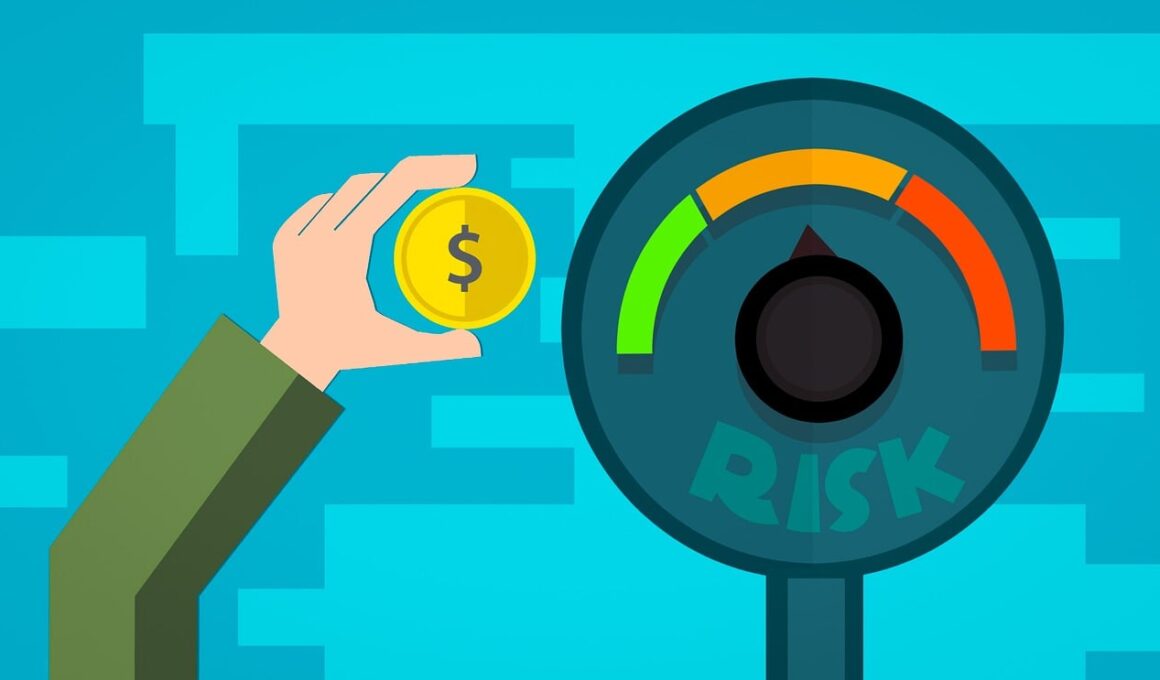Best Practices for Credit Risk Evaluation in Modern Finance
Credit risk evaluation is crucial for financial institutions aiming to mitigate potential losses while maximizing profitability. Understanding borrower creditworthiness involves utilizing various analytical methods and data sources. Here are some major aspects to consider in this process. Firstly, establishing a comprehensive credit scoring model should be a priority. This model evaluates past credit performance, payment history, and ongoing financial stability. Credit scoring algorithms need continuous updates as new data becomes available. Secondly, integrating alternative data sources can enhance accuracy. Traditional credit histories might not cover individuals with limited credit backgrounds. Utilizing social media insights or transaction data can provide a more holistic picture of a borrower. Thirdly, employ machine learning techniques for predictive analytics. Machine learning algorithms identify patterns and trends that traditional methods might overlook. This creates a smarter evaluation process. Finally, ensure continuous monitoring of borrower behavior and economic changes. Timely updates enable proactive risk management, allowing institutions to adjust credit limits or terms as needed. By implementing these best practices, financial organizations can significantly improve their credit risk evaluation processes, leading to better financial decisions and potentially lower default rates.
Moreover, a well-defined risk appetite statement is integral to the credit management process. This document outlines the level of risk a financial institution is willing to accept. It establishes guidelines for acceptable credit risk levels and ensures alignment across different departments involved in credit decisions. Regularly communicating this statement helps to maintain a risk-aware culture throughout the organization. Furthermore, training staff about emerging risks in lending and credit evaluation is essential. Continuous education keeps staff updated on the latest trends and credit management techniques. Workshops, seminars, and e-learning platforms can provide vital knowledge that enhances employee skills in risk assessment. Another best practice involves developing a standard operating procedure (SOP) for the credit evaluation process. This SOP should include clear steps for risk assessment, documentation requirements, and authority levels for credit approvals. It ensures consistency and transparency across the organization, facilitating better decision-making. Lastly, the implementation of robust technology solutions can streamline the credit evaluation process. Automated systems minimize errors and speed up the credit decision timeline. Leveraging technology not only increases efficiency but also allows for better data analytics capabilities, leading to informed credit evaluations.
Utilizing Technology in Credit Management
In today’s rapidly evolving financial landscape, technology plays a pivotal role in credit risk evaluation. Financial institutions adopt software and applications that enhance data gathering, analysis, and reporting capabilities. For instance, risk management systems can aggregate customer credit data from various sources automatically. This automation allows for real-time monitoring and evaluation of credit risk positions. Moreover, using artificial intelligence (AI) enables lenders to assess creditworthiness more dynamically. By employing AI algorithms, banks can analyze vast amounts of data efficiently, focusing on relevant variables that predict borrower behavior accurately. As a result, AI-driven insights not only improve lending decisions but also enhance customer experience. Additional technologies such as blockchain can provide transparency and security in credit transactions. These technologies eliminate fraudulent activities, ensuring integrity in credit evaluations. Another aspect is to ensure that the technology employed is compliant with regulatory standards and data protection laws. Institutions must regularly audit and update their systems to maintain compliance. Overall, embracing these technological advancements leads to more accurate credit risk evaluations, providing lenders with a competitive edge while ensuring responsible lending practices.
Furthermore, a strong emphasis on borrower communication is vital in the credit evaluation process. Establishing clear lines of communication builds trust and understanding between lenders and borrowers. Informing clients about how their credit decisions are made can demystify the process and encourage openness. Regular outreach, especially during application processes, ensures borrowers understand any documentation needed and timelines involved. Additionally, offering personalized insights tailored to their credit profiles demonstrates care and adds value to the relationship. Providing educational resources about good credit practices can also empower borrowers. Financial literacy programs that assist clients in improving their credit scores can cultivate mutually beneficial relationships. Moreover, retaining borrower engagement is crucial even after the credit decision has been made. Institutions should offer support in case of changes in financial situations, allowing for renegotiation or restructuring of terms. Critical to this practice is providing responsive customer service that addresses borrower inquiries swiftly. In doing so, lenders showcase their commitment to supporting clients through financial challenges. This proactive approach not only aids in preserving borrower relationships but also contributes to overall risk management, making it an essential aspect of credit evaluation.
The Importance of Data Accuracy
Accurate data is the cornerstone of effective credit risk evaluation. It is imperative for financial institutions to prioritize data integrity throughout their operations. The quality of data directly impacts the accuracy of credit assessments and decisions. Therefore, institutions need to invest in robust data management frameworks to ensure accuracy, consistency, and timeliness of information. Regular data audits can help identify inconsistencies and errors that might compromise credit evaluations. Additionally, integrating feedback loops within the data management processes can facilitate continuous improvement. When inaccuracies are discovered, institutions should have measures in place to rectify them promptly. Another vital consideration is establishing a clear data governance policy. This includes assigning responsibilities for data accuracy, management, and compliance. Ensuring that all stakeholders understand their roles in the process enhances overall effectiveness. Moreover, training employees on the significance of data quality reinforces its importance across the organization. By fostering a culture that values accurate data, institutions can enhance their credit risk evaluation processes, reduce the chances of defaults, and foster informed lending practices. Ultimately, prioritizing data accuracy is essential for sustainable growth and long-term success.
Lastly, the importance of ethical considerations in credit risk evaluation cannot be overlooked. Financial institutions must ensure that their credit evaluation processes are fair and non-discriminatory. Implementing transparent and accountable practices leads to greater trust from potential borrowers. Regularly reviewing evaluation criteria to ensure they do not inadvertently exclude certain demographic groups is crucial. Bias in credit risk assessments can lead to reputational damage and legal consequences. Moreover, fostering inclusivity in credit processes encourages a wider range of prospective clients, benefiting both lenders and borrowers. It can also positively impact an institution’s market reach and credibility. Furthermore, forming partnerships with advocacy groups can provide insights into the needs and challenges faced by underrepresented communities. These partnerships also help financial institutions develop better-informed credit products that cater to diverse clientele. Additionally, embedding social responsibility into the core of credit operations showcases a commitment to ethical behavior. Upholding ethical standards enhances customer loyalty and brand reputation. By integrating ethical practices into credit risk evaluation, financial institutions position themselves for sustainable success while contributing positively to society.
Conclusion: Future of Credit Risk Evaluation
Reflecting on the best practices for credit risk evaluation reveals a dynamic landscape in modern finance. As financial institutions adopt sophisticated technologies, the methodologies that guide credit evaluations continuously evolve. Adherence to best practices enhances the accuracy and efficiency of credit assessments, minimizing risks and maximizing returns. The growing role of data analytics and machine learning will shape future practices, allowing lenders to make data-driven decisions. Maintaining a focus on ethical standards will ensure that credit evaluations remain fair and inclusive while addressing potential disparities. Moreover, enhancing communication between lenders and borrowers cultivates trust, fostering long-term relationships vital to business success. In this light, continuous training and improvement are key components for employees involved in credit management. Embracing flexibility and adaptation to changing market conditions will provide institutions a competitive edge. Future strategies will increasingly rely on technological advances alongside human judgment. Financial institutions aiming to thrive in this competitive space must prioritize integration, inclusivity, and ethics in their credit risk evaluations. Ultimately, these practices are not mere compliance measures but essentials for building a resilient and sustainable financial ecosystem.


